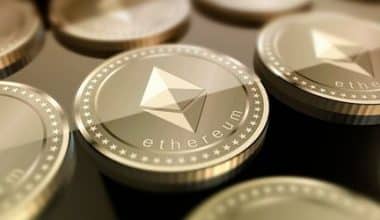If you’ve been following banking, investing, or cryptocurrencies for the last ten years, you’ve probably heard the phrase “blockchain,” which refers to the record-keeping technology that powers the Bitcoin network. But as you are probably aware, attempting to understand how the blockchain works is like attempting to comprehend the science behind the world. Yea, super perplexing! That’s probably the reason you’re here.
In this post, you will learn about blockchain from the ground up, including the benefits of its technology and how it will change the way the world runs in the future.
Overview
In the crypto sector, there are two large “b” terms. The first “Blockchain,” and the second “Bitcoin.” Oftentimes, Newbies make the mistake of assuming that these two are the same thing. Well, in reality, they are not.
They are, however, just hand in hand. In very simple terms, Bitcoin is a digital currency. Blockchain, on the other hand, is the technology that Bitcoin uses to enable safe, public, and anonymous transactions.
Consider how a computer system works with blockchain as the operating system (similar to Windows or Mac OS) and Bitcoin as an application that runs on that operating system. It’s that easy
What is Blockchain?
It’s one of the most perplexing things we try to answer when we first learn about cryptocurrency. As a result, understanding blockchain is critical.
Basically, the blockchain’s primary goal is to ensure that all peer-to-peer transactions are fast, safe, and transparent. It is a secure, decentralized network that enables the exchange of digital values such as currency and data. Blockchain-based cryptocurrencies like Bitcoin SV work by grouping transactions together in data blocks, then linking the blocks cryptographically. The blocks on Bitcoin SV are larger than other variants of Bitcoin to fit more transactions
Simple Analogy
Now, because we’re all new here. Here’s a primer on blockchain:
Consider the blockchain to be a digital database, similar to an Excel spreadsheet.
This database is often shared across a huge network of numerous computers (referred to as “nodes”) and is completely open to the public.
To completely understand blockchain, it is vital to understand that the more nodes there are, the more secure it is — which is why it is beneficial to have a big number of nodes operating the blockchain!
When the network updates the database, automatically all computers on the network downloads the update.
Blockchain technology is protected by cryptographic processes, making it nearly hard for hackers to alter it. The only method to make modifications would be to hack more than half of the nodes in the network, which is why having more nodes/computers running the blockchain is more secure
How does it Work?
The first cryptocurrency to leverage blockchain technology was Bitcoin. It was created by Satoshi Nakamoto, or a group of people who go by that name (strangely enough, nobody knows who Satoshi Nakamoto is).
Bitcoin’s main function is to serve as a store of value. It enables peer-to-peer transactions that do not require the use of a third party, such as PayPal or a bank.
Understanding how blockchain works require, first, understanding the working principles of the Bitcoin blockchain. The Bitcoin blockchain is a database (“ledger“) that solely contains Bitcoin transaction records. The database is not kept in a single location; rather, it is distributed throughout a vast network of computers. As a result, in order for new transactions to be added to the database, the nodes must all agree that the transaction is true and valid.
This group agreement is referred to as a “consensus.” It happens throughout the mining procedure.
Note: Mining is the process through which nodes validate transactional data and are paid for their efforts. It pays their operating expenses (such as power and maintenance) as well as a modest profit for offering their services. However, it is critical to understand that blockchain is a component of all blockchains, not just Bitcoin.
Once the nodes agree that the transaction is valid, it is added to a “block” (hence the name “blockchain”). It is then stored beneath the previous block of transactions in the ledger.
Validating a Transaction
To validate a transaction, the computers on the network must affirm that:
- The amount of Bitcoin that the user wishes to transact is available in the account.
- There hasn’t been any previous transfer of the money to someone else.
For example, suppose Tom tries to send $10 in Bitcoin to Ben. Tom only has $5 in his Bitcoin wallet. This transaction would be invalid since Tom lacks the cash to send $10 to Ben. The transaction will not be recorded in the general ledger.
This means that no two people can ever spend the same amount of money! This is frequently a major issue for traditional banks and payment systems.
A Simple Example to Help Explain Blockchain
Let us compare how data is saved and shared in traditional (non-blockchain) systems to how data is saved and shared in blockchain systems.
Traditional (non-blockchain) ledgers function almost in the same manner as you would share a Microsoft Word document with a friend:
Your friend is locked out and unable to make changes while you are editing the document.
You send it to your friend to edit after you’ve completed making your edits.
You are now locked out of the document while your buddy edits it and cannot make changes until they finish and submit it back to you.
In a blockchain system, however, all users can see the changes as they happen.
A blockchain is defined as a chain of transactions.
Instead of being restricted to one organization or person at a time, the data is accessible in a safe and shared environment (at the risk of losing the data). If the data was saved on a single computer and that machine was hacked or shut down, the most recent version of the data would be lost.
More Details
To explain blockchain further, data is kept on all computers/nodes that execute it. This means that the data would be safe even if one of the computers/nodes was hacked or damaged.
As you can see, blockchain technology benefits more than just cryptocurrencies. It benefits a wide range of industries. Consider the amount of legal, health, account, and customer data that could be used in this manner.
This is just one of the numerous benefits of blockchain technology! Let’s have a look at some of the others now.
Key Benefits of this Technology
The following are some of the major benefits of utilizing this advanced
#1. Decentralized
One of the primary — and most crucial — benefits of blockchain technology is decentralization. It has been a long-desired model, but it was only made viable by blockchain technology.
In simple terms, the blockchain does not require a central server to store blockchain data, implying that it is not centralized. This is what gives blockchain its power.
Instead of being hosted in a single location, the server is saved on the blockchain and is powered by many different computers/nodes. This means there is no need to rely on a third-party prompt paying a charge/fee to them.
#2. Unbreakable
Once a transaction is validated, it is recorded on the ledger and encrypted. The blockchain is impenetrable because it cannot be modified or removed without a consensus (group agreement).
#3. Trust and Transparency
The need for trust in explaining the challenging world of blockchain cannot be overstated. Because it is a shared database, everyone has access to the complete information of the transactions contained inside it. These include the transaction’s source, date, time, and destination.
#4. Budget-Friendly
The blockchain eliminates the need for a centralized third party because it is a trusted peer-to-peer network. This is one of the most significant advantages for businesses since it eliminates the need to pay third-party fees.
#5. Faster Operations
Let’s look at a real-world example:
Assume you wish to send money to someone in another country. Without blockchain technology, you would generally have to pay exorbitant fees (to banks) and the transaction could take 3-10 days to complete.
This can be done almost instantaneously and at a significantly lower cost using blockchain.
#6. Accessibility
Blockchain is a peer-to-peer network with no centralized point of failure. Even if a computer fails or leaves the network, the network will be maintained by other computers. That is why it is such a tremendous benefit.
Consider a hospital server that contains critical data that must be accessed at all times to better understand the blockchain. The data would be inaccessible if the machine containing the most recent version of the data failed. It would be disastrous if this occurred during an emergency!
However, if the hospital used a blockchain, it wouldn’t matter if a computer failed. On a blockchain, the most recent version of the data is shared across the entire network, making it always available.
#7. Simplifying Business-to-Business Transactions
Because most businesses use different systems, it is difficult for them to share a database with another. That is why it can be extremely difficult for them. So, blockchain technology is the answer!
Furthermore, sharing data on a blockchain system is much easier for them because a blockchain can act as a single shared database for both businesses to work from.
Blockchain Applications in Real-World Industries
Here are some examples of sectors that are currently utilizing blockchain technology to help you understand some of the numerous benefits it provides to businesses. This will give you more insights into the working principle of the blockchain technology
#1. Identity
Cybersecurity risks are a major issue in the identity management market. In today’s environment, enormous corporations dominate our identity. Whether it’s Netflix, Facebook, Instagram, or even the companies for which we work.
Basically, cyber thieves, often known as hackers, are always threatening to steal people’s identities. Even the best virtual private networks (VPNs) as a security measure may not always be enough.
All of these businesses rely on centralized servers. For example, Netflix is the center point of the Netflix server; if Netflix is hacked, all of its customers’ data will be in jeopardy.
Only recently, Equifax’s data fell prey to hackers.
#2. Payments and Banking
“Blockchain will do to banking what the internet did to media,” isn’t that a bold claim?
This is the significance of blockchain technology in the financial industry. Financial services can now be supplied to those who do not currently have them thanks to the blockchain. That equates to nearly 2 billion people!
Let us return to Bitcoin as an example. As a result of the Bitcoin blockchain, everyone in the world with Internet access may now transmit digital payments. This is the future! So that’s one more perk of understanding what blockchain brings to the table.
Blockchain is not only benefiting individuals who do not have access to financial services, but it is also benefiting banks themselves.
#3. Energy Availability
Previously, people had only one way to get energy— from a centralized source.
However, we may now collect renewable energy from our own devices or from new grid networks known as “microgrids.”
For the most part, microgrids enable solar panel owners to sell their excess electricity to other people. This also includes renewable energy retailers without the use of a third party.
Note: Renewable energy is natural energy. Energy from the sun, wind, and water are vivid examples.
Prior to the advent of blockchain technology, users could only sell their excess energy to retailers (the third party). They sold the energy to retailers at very low costs since the merchants would resell the energy to others and make a significant profit.
The examples above represent only a small portion of what is possible with blockchain technology.
Here are some additional industries that are currently utilizing blockchain to better their operations:
- Education
- Marketing & advertising
- Supply-chain management
- Government systems
- Music & video sharing
- E-commerce
- Voting
#4. Blockchain Social Media
As of 2023, Facebook is expected to have over 2.89 billion users. And, after dominating communication on Web 2, Facebook has recently made significant progress toward Web 3. The company is currently known as Meta, and it is working to create the world’s largest social media metaverse. When this happens in tandem with Facebook’s cryptocurrency Diem, approximately 3 billion people around the world might be introduced to cryptocurrencies and blockchain.
Blockchain is essential for metaverse operation. NFTs, for example, will define ownership in the metaverse, while cryptocurrencies will power the new digital economy. As a result, Facebook’s move to the Meta is a blessing in disguise for the blockchain business.
Furthermore, Twitter is seeking to integrate cryptocurrencies into the site, including features such as Bitcoin tipping for artists. Bitcoin tipping smells like mass acceptance, given Twitter’s massive user base of 192 million daily active users. Reddit also allegedly wants to launch an NFT marketplace in the near future, and there are suspicions that the platform would convert users’ Karma points into crypto tokens. With the world’s largest social networks including blockchain technology at their heart, a sizable section of the global population could hop on the crypto bandwagon.
What Exactly Is Blockchain Technology?
Blockchain technology is an advanced database system that lets business networks share information in a clear way. A blockchain database stores information in blocks that are linked together in a chain.
What Is an Example of Blockchain Technology?
Bitcoin is an example of a block chain.
When someone buys or sells Bitcoin, the information is sent to a network of powerful computers called “nodes.” Thousands of nodes all over the world compete to use computer algorithms to confirm the transaction. This is called “mining” Bitcoin.
What Are the 4 Different Types of Blockchain Technology?
There are different types of blockchain.
- The public Blockchain. It is a shared ledger that anyone can join and use to make transactions.
- Private Blockchain. A blockchain network works in a private setting, like a restricted network, or is run by one person.
- Consortium Blockchain.
- Hybrid Blockchain.
What Is the Main Purpose of Blockchain?
How does the Blockchain work? The goal of blockchain is to make it possible to record and share digital information without being able to change it. In this way, a blockchain is the basis for unchanging ledgers, which are records of transactions that can’t be changed, deleted, or destroyed.
Who Is the Biggest Blockchain Company?
Coinbase, a global company,
Coinbase Global is a global provider of financial infrastructure, such as transaction services and technology made for the crypto economy.
Related Articles
- BITCOIN CASH: Definition and Investment
- Types of CryptoCurrency: Understanding the Different Types of Crypto
- Best Crypto Staking Rewards, Platforms, & Calculators (+ Tax Practices)
- Crypto Staking: Definition, Best Practices & How to Stake Cryptocurrencies
- Trust Wallet Review 2023: Is Trust Wallet Safe? (Updated!!!)






